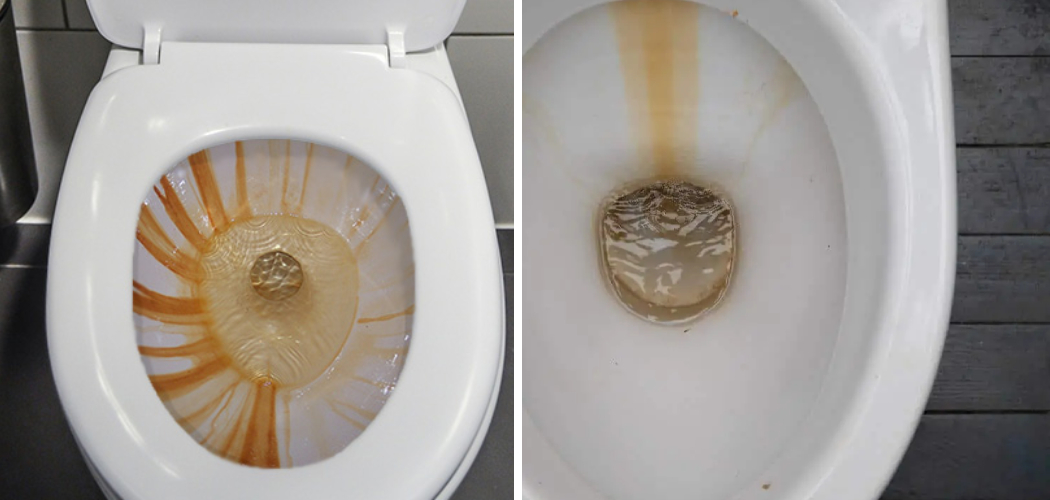Do you have an old toilet with rust accumulating in the bottom of the bowl? Rust can be tough to eliminate, but don’t worry – it’s not impossible!
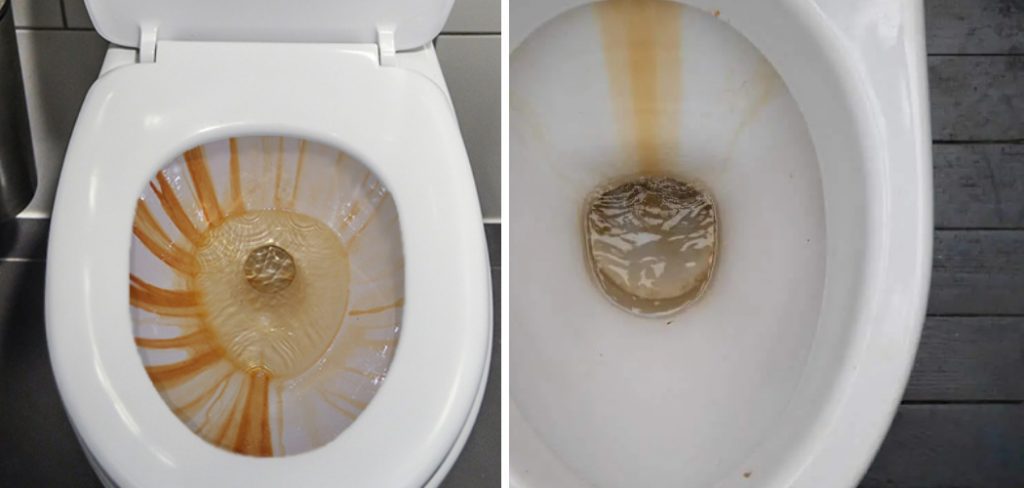
Whether you’re a homeowner or just looking to maintain your rental property, getting rid of rust from the bottom of the toilet bowl is essential. It not only looks unsightly, but it can also cause discoloration and damage to your ceramic fixture over time if left unchecked.
In this blog post, we’ll cover three simple steps on how to remove rust from bottom of toilet bowl quickly and easily. We will discuss how to use mechanical scrubbing brushes, chemical cleaners, and other helpful tools to remove stubborn spots of rust from the bottom of the toilet hope. With these techniques at hand, you’ll be able to restore your bathroom fixtures in no time!
What Will You Need?
Before attempting to remove rust from the bottom of the toilet bowl, you will need to gather the appropriate tools and supplies. You should have:
- Mechanical scrubbing brushes (toilet brush)
- A pumice stone or similar abrasive surface cleaner
- Chemical rust remover
- Protective gloves and eyewear
- Rags/towels
- Bucket
- Water
Now that you have everything you need let’s get started!
10 Easy Steps on How to Remove Rust From Bottom of Toilet Bowl
Step 1: Mechanical Scrubbing with a Toilet Brush
The first step to removing rust from the bottom of your toilet bowl is to use mechanical scrubbing. Scrub the affected area using a stiff-bristled brush, such as a toilet brush. This will help remove any loose rust particles and debris that may be present on the surface of the bowl.
Step 2: Use a Pumice Stone or Abrasive Surface Cleaner
You may need an abrasive cleaner, such as a pumice stone, for more stubborn rust spots. Wet the pumice stone with some water and gently rub it against the rusty area in a circular motion until it begins to loosen up. Be sure to wear protective gloves and eyewear while doing this step!
Step 3: Apply Chemical Rust Remover
Once you have removed all of the visible rust, use a chemical rust remover such as CLR or Vinegar to remove any residue further. Simply pour the chemical onto the affected area and let it sit for a few minutes before scrubbing with a brush. Be sure to wear protective gloves and eyewear while doing this step!
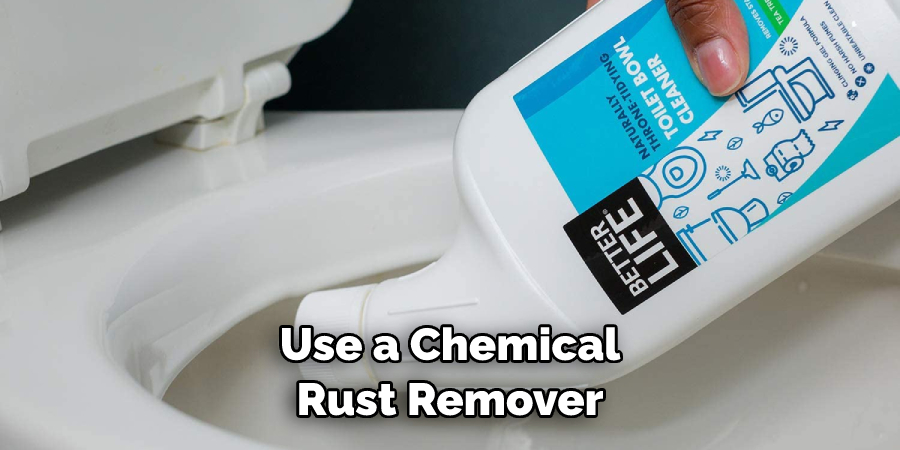
Step 4: Rinse Off
Once you have finished applying the chemical rust remover, rinse off the toilet bowl using warm water and a rag or towel. This will help remove any excess chemicals and help prevent further discoloration. Repeat Steps 2 and 3 if any rust remains until the entire area is clean.
Step 5: Dry Off
After rinsing off the toilet bowl, use a dry rag or towel to dry off the affected area. This will help prevent future rust damage and keep your bathroom looking clean and presentable. Be careful not to leave any damp spots on the surface as this could cause further discoloration.
Step 6: Test Bowl for Cleanliness
Before replacing the lid on the toilet bowl, test it for cleanliness by running some water down into it. If you notice any discoloration or residue areas, repeat Steps 2-4 until the entire area is suitably clean!
Step 7: Flip the Toilet Bowl Over
If necessary, turn your toilet bowl upside down so any remaining residue can be cleaned. Using a stiff-bristled brush, scrub away any remaining debris before flipping the toilet bowl back over. Ensure you wear protective gloves and eyewear while flipping the bowl, as any residue can be hazardous.
Step 8: Apply Appropriate Cleaner/Polisher
Once you have thoroughly dried off the bottom of the toilet bowl, apply an appropriate cleaner/polisher to help restore its shine and protect it from further damage. You can use a commercial cleaner or simply use a mixture of baking soda and vinegar. Keep in mind that applying too much cleaner can cause discoloration or residue, so be sure to use it sparingly.
Step 9: Reinstall the Toilet Bowl
Once you have finished cleaning and polishing your toilet bowl, re-install it onto the unit’s base. Ensure you secure all nuts/bolts correctly for a safe and effective installation! Check to see if any bolts are loose or corroded before re-installing the toilet bowl.
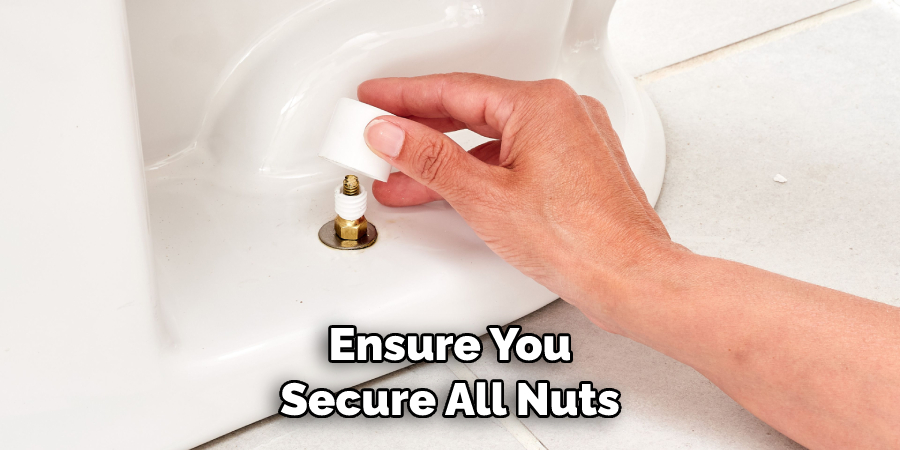
Step 10: Enjoy Your Clean Toilet Bowl!
Now that you know how to remove rust from the bottom of the toilet bowl quickly and easily, you can enjoy your clean and shiny bathroom fixture without worrying about discoloration or damage.
So take a few moments to appreciate the beauty of your “new” toilet bowl! Remember to keep up with regular cleaning and maintenance to ensure that your toilet bowl remains in peak condition.
By following these simple steps, you can easily restore your rusty toilet to its original glory. With some elbow grease and handy tools, you can easily remove rust from the bottom of the toilet bowl and enjoy a sparkling clean fixture in no time!
5 Additional Tips and Tricks
- try using a pumice stone or steel wool for tougher rust stains. Soak the stone or wool in warm water and scrub directly on the rust stain to remove it.
- Make a paste with baking soda and water to help break down the rust. Apply this mixture onto the affected area and sit for 10 minutes before wiping clean with a damp cloth.
- Vinegar can be used as an alternative cleaning agent for removing rust from your toilet bowl bottom. Combine one-part white vinegar with three parts water and rub onto the rusty area until it is removed.
- Using commercial products designed to remove rust from porcelain surfaces may be more effective than natural solutions like vinegar or baking soda alone.
- To prevent rust from forming in the future, regularly clean and scrub the bottom of your toilet bowl with an all-purpose cleaner or a mixture of baking soda and white vinegar. This will help keep the surface free of any bacteria or dirt that could cause rusting.
With regular cleaning sessions, you can prevent rust buildup and keep your toilet looking great for years to come!
5 Things You Should Avoid
- Avoid using abrasive scrubbing materials such as steel wool or pumice stones on the surface of your toilet bowl, as this can cause scratches and damage to the porcelain.
- Do not mix bleach with any other cleaning agents when trying to remove rust from your toilet bowl bottom; this could create dangerous fumes that could harm you or anyone nearby.
- Do not use harsh chemical cleaners like ammonia or anything containing hydrochloric acid, as these can corrode metal components inside the toilet and cause them to rust even faster.
- When cleaning around the bottom of your toilet bowl, make sure to avoid spraying cleaner into the siphon jets at the bottom – this can clog them and lead to a slow draining toilet.
- Avoid using any type of powdered cleaner that could get stuck in the nooks and crannies of your toilet bowl bottom; this could also lead to premature rusting in these areas.
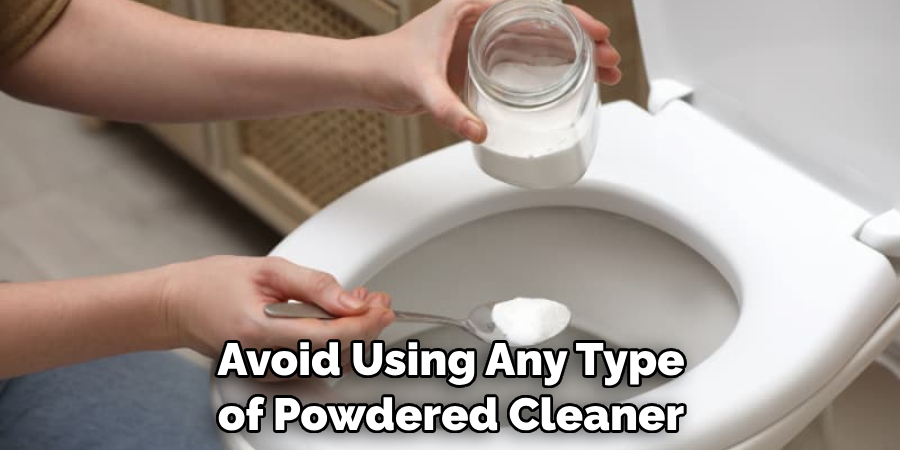
Follow these tips, and you’ll be on your way to having a sparkling clean, rust-free toilet!
What Causes Rust in the Bottom of Toilet Bowl?
Rust can form in the bottom of a toilet bowl due to several factors, including exposure to mineral-rich water, poor drainage, and improper cleaning. Mineral-rich water contains oxidants that can react with the metal components inside the toilet bowl and cause them to corrode and rust over time.
Poor drainage or not using enough cleaner when cleaning your toilet can also contribute to rust buildup.
Finally, using too much abrasive material when scrubbing your toilet bowl can lead to premature wear on the porcelain resulting in rusting. Overall, it’s important to regularly inspect and clean your toilet bowl for any signs of rust to keep it looking great for years to come!
With proper maintenance and care, rust will be one less thing you’ll have to worry about.
Can Toothpaste Remove Rust?
Toothpaste is ineffective for removing rust from the bottom of a toilet bowl. While toothpaste does contain mild abrasives which could be used to polish away any surface-level rust, it will not be able to penetrate and remove any deeply embedded rust stains.
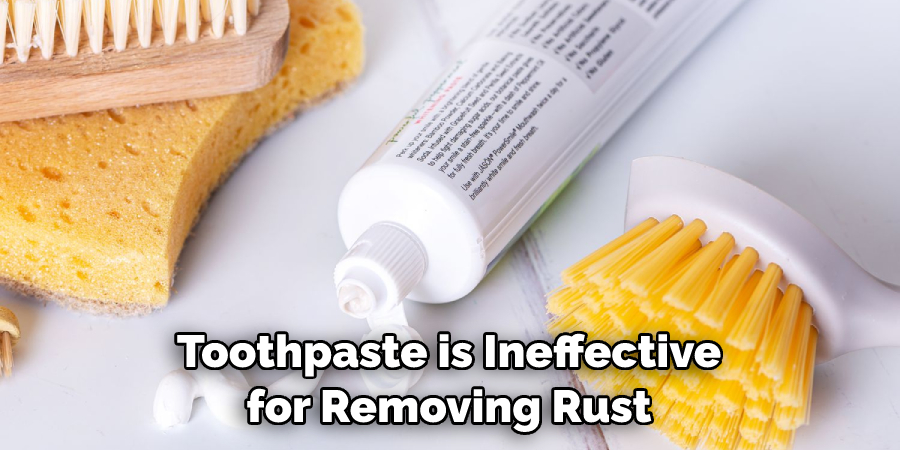
Additionally, using toothpaste as a cleaning agent can be damaging to your porcelain, as the abrasive ingredients in the paste can scratch or wear away at the surface over time. For best results when removing rust from your toilet bowl bottom, stick with natural products such as vinegar and baking soda or use commercial cleaning products specifically designed for porcelain surfaces.
Conclusion
Removing rust from the bottom of the toilet bowl is a challenging task. Utilizing baking soda, vinegar, and commercial products combined with scrubbing action are the best methods to eliminate rust. However, prevention is always better than cure.
Regularly cleaning and maintaining your toilet will help prevent rust buildup and keep it looking new for years. Consider creating a maintenance schedule – weekly use of a toilet bowl cleaner, monthly deep cleaning, or using a toilet descaler product every few months should help you stay ahead of the game in rust removal and keep your toilet clean and spotless.
Even if rust does appear in your toilet bowl, it is possible to remove it quickly and efficiently as long as you know how to remove rust from bottom of toilet bowl, follow safety precautions when dealing with chemicals, and utilize the right materials. Good luck!

